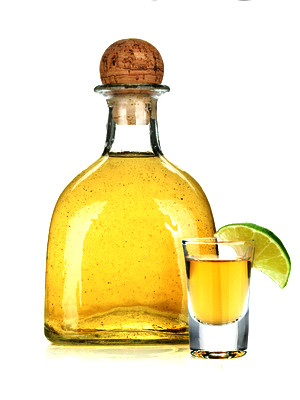 If you’re a tequila drinker, you might wonder what types of tequila will give you a hangover? There are literally hundreds of tequila brands, and the quality of a given tequila actually depends on several factors. Tequila isn’t really meant to be consumed in shot form. If you get the right tequila type, you should be able to sip it just like a good bourbon. However, for most partygoers cheap tequila is often served in a shot glass, with some salt and a lime, to hide the awful taste.
If you’re a tequila drinker, you might wonder what types of tequila will give you a hangover? There are literally hundreds of tequila brands, and the quality of a given tequila actually depends on several factors. Tequila isn’t really meant to be consumed in shot form. If you get the right tequila type, you should be able to sip it just like a good bourbon. However, for most partygoers cheap tequila is often served in a shot glass, with some salt and a lime, to hide the awful taste.
Really good tequilas are made from the agave plant (commonly referred to as blue agave), mezcal or maguey. There are two main types of Tequila: 1) 100% agave, which is made entirely of Blue Weber Agave — richer with bold flavors; and 2) mixtos. Rule of thumb, if “100% de Agave” is not on the label, it’s probably mixtos. Mixtos fermentation generally constitutes alcohol production from ~51% agave sugars (or more), with the rest coming from fructose and glucose sugar.
Tequilas can be classified further according to their aging process and bottled into one of five categories:
- Blanco/Plata/White/Silver Tequila – This type of tequila is average variety and most likely what you can expect from a bar. It has been aged for 60 days or less and is bottled immediately after it has been distilled.
- Joven/Gold Tequila – These are silver tequilas that are left to age with colorants and flavorings like sweet caramel, sugar syrup or glycerin. They have a smooth, subtle woody flavor and because of the flavorings, have a golden hue.
- Reposado Tequila – These type of tequilas are more thought of as top shelf. They have a smooth, sweet and smoky taste and are richer and more complex than the taste of Blancos. They are aged in oak wood barrels for at least 2 to 12 months. As they age, their color becomes tan.
- Anejo or Vintaged Tequila – This type of tequila has been aged in oak barrels for a period of one to two years. Anejo means vintage, it has a very dark amber color from the oak. This type of tequila is definitely not used for mixing. It is more sophisticated and more subtle than reposado tequilas.
- Extra Anejo or ultra-aged tequila – These tequilas are aged more than three years in oak barrels. Batches must not contain more than 600 liters and are usually smaller than 200 liters. It is richer in flavor with hints of smoke, wood and caramel and a very dark color. These are the best tequilas you can get.
So which among the types of tequila actually gives the worst hangover? For one, if you plan on working the next day or you just want to drink a lot, you should look for types of tequila with 100% agave. It is believed that the use of cheap sugars in mixtos type tequilas lead to worse hangovers. Blancos are not aged and most likely would be a mixtos blend, and are well known anecdotally for giving the worst hangovers. Joven or the Gold tequilas aren’t much better. In fact, depending on the recipe they can be worse depending on the additives.
There are over 901 registered tequila brands with 128 producers registered (as of 2008). You are pretty safe with a Reposado, these are rested tequilas which usually means a 100% agave. If in doubt ask the waiter or waitress about the best types of tequila they have. The Anejo and Extra Anejo are always the way to go (if you can afford them) for several reasons: 1) You sip them, so you slow down alcohol consumption (the best-accepted way for avoiding hangovers); 2) No need for sugary mixers which can negatively affect some people’s hangover; and 3) They most likely will be thoroughly distilled and filtered reducing congeners.
